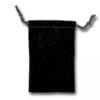Suriname Power Plug Adapters Kit with Travel Carrying Pouch – SR
- Suriname Plug Adapters Kit with Travel Carrying Pouch Includes:
- One Wonpro Grounded plug adapter for Suriname
- One Wonpro Non-Grounded plug adapter for Suriname
- One Basic Grounded plug adapter for Suriname (other outlet configuration if needed)
- One Basic Non-Grounded plug adapter for Suriname (other outlet configuration if needed)
- One Black Travel Velvet Carrying Pouch
$10.71 – $11.90Price range: $10.71 through $11.90
Quantity Discounts
SKU: Suriname-Plug-Adapter-Kit
Categories: Adapters, Worldwide Travel Plug Adapter Kit with Carrying Pouch
Tag: Suriname
Suriname Plug Adapters Kit with Travel Carrying Pouch Includes:
- One Wonpro Grounded plug adapter for Suriname
- One Wonpro Non-Grounded plug adapter for Suriname
- One Basic Grounded plug adapter for Suriname (other outlet configuration if needed)
- One Basic Non-Grounded plug adapter for Suriname (other outlet configuration if needed)
- One Black Travel Velvet Carrying Pouch with Drawstring closure Large 4 wide x 5 inches
| Weight | 0.4000 lbs |
|---|---|
| Color Travel Pouch | BLACK (If Available) |
Information
- Outlet Plug: Suriname uses
Type C
- and
Type F
Voltage and Video
Suriname Voltage and Video Systems
Suriname Voltage and Frequency
- Electricity in Suriname is 127 Volts, alternating at 60 Hz (cycles per second)
- If you travel to Suriname with a device that does not accept 127 Volts at 60 Hertz, you will need a voltage converter
Suriname Video System
- Suriname has M/NTSC video system
History
Suriname History
- First explored by the Spaniards in the 16th century and then settled by the English in the mid-17th century, Suriname became a Dutch colony in 1607. With the abolition of slavery in 1863, workers were brought in from India and Java. Independence from the Netherlands was granted in 1975. Five years later the civilian government was replaced by a military regime that soon declared a socialist republic. It continued to exert control through a succession of nominally civilian administrations until 1987, when international pressure finally forced a democratic election. In 1990, the military overthrew the civilian leadership, but a democratically elected government – a four-party New Front coalition – returned to power in 1991 and has ruled since; the coalition expanded to eight parties in 2005.














Reviews
There are no reviews yet.